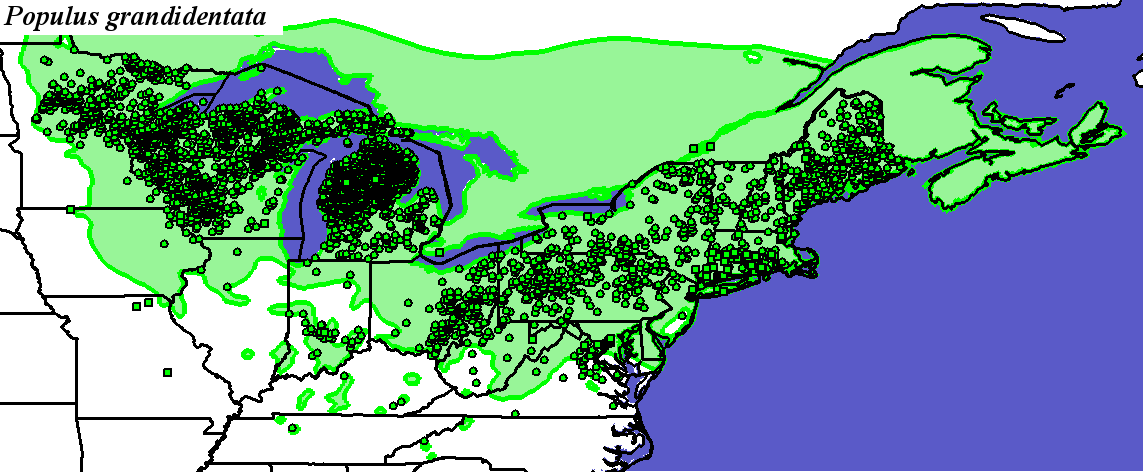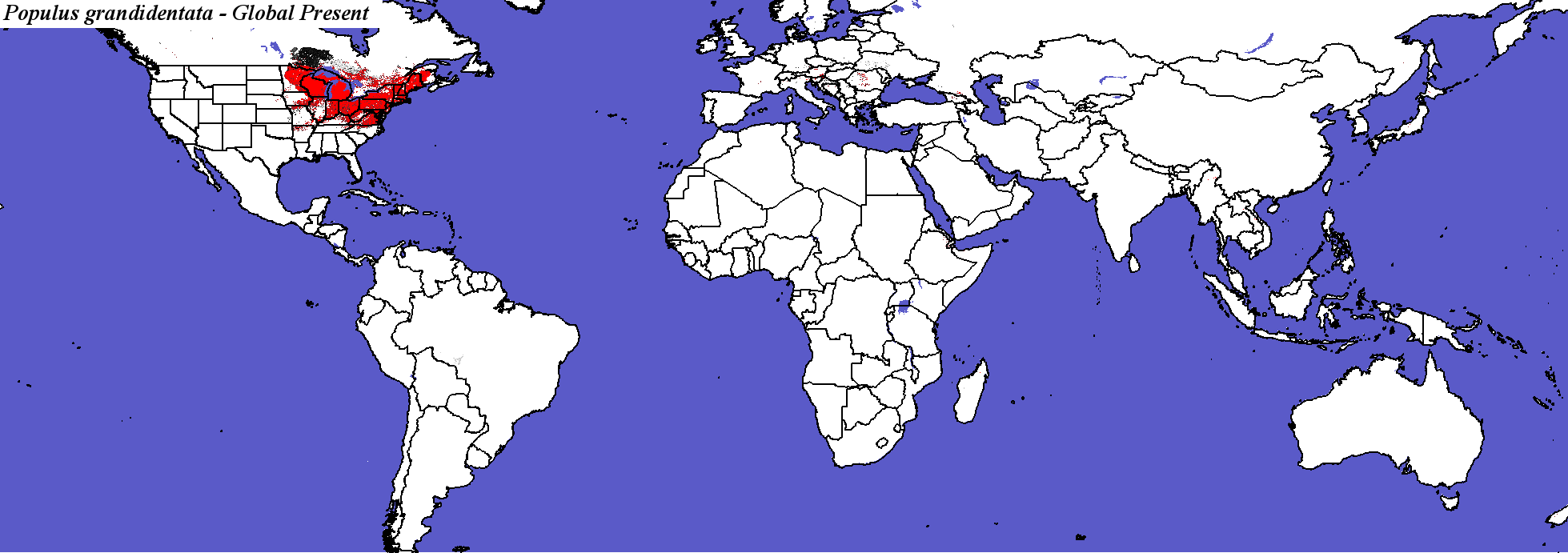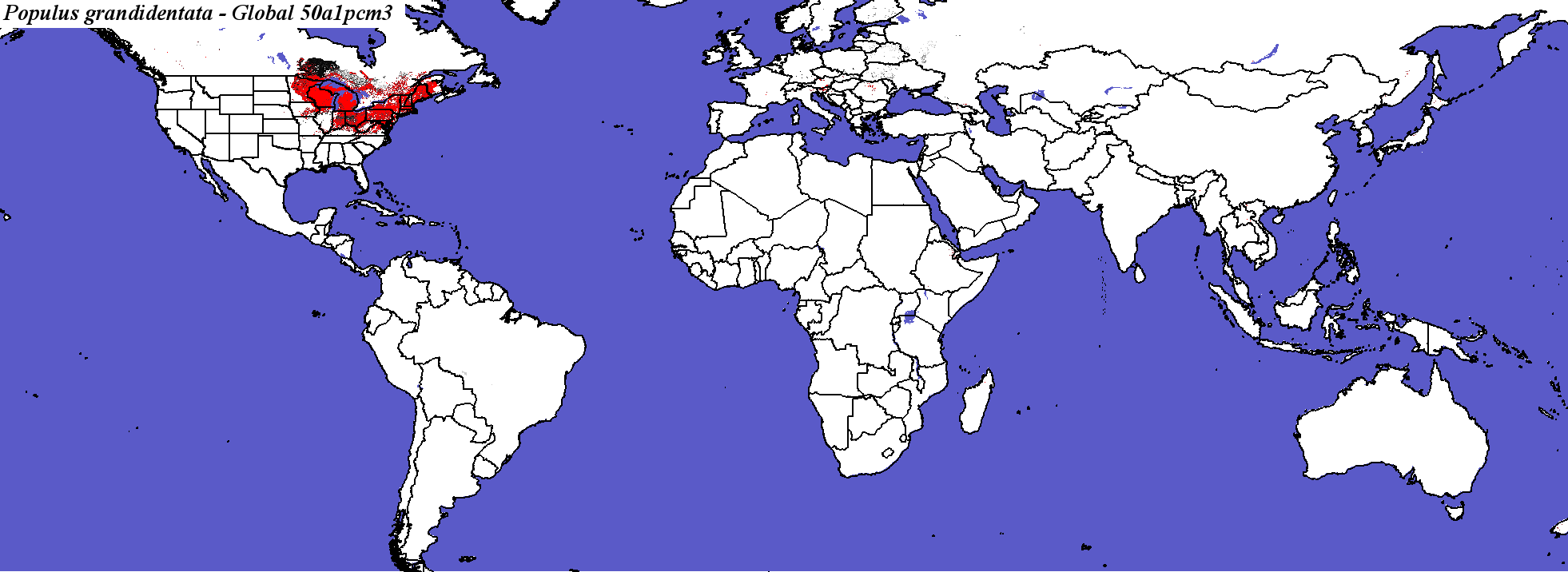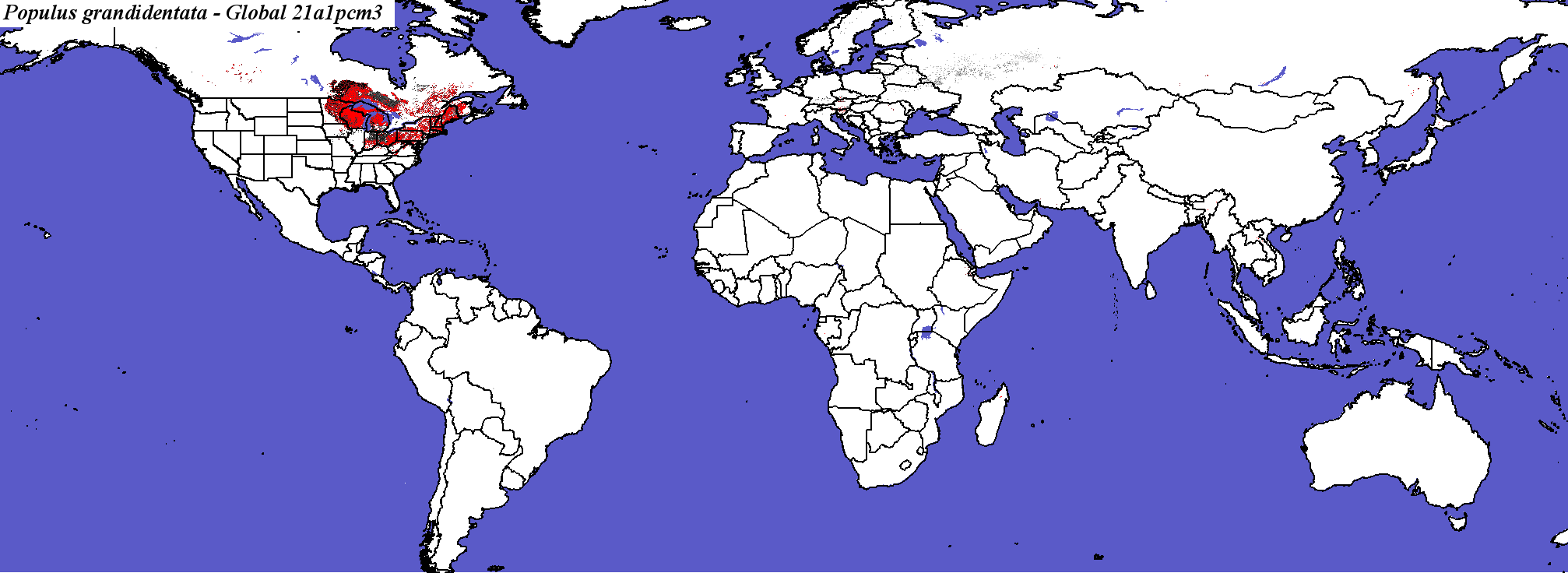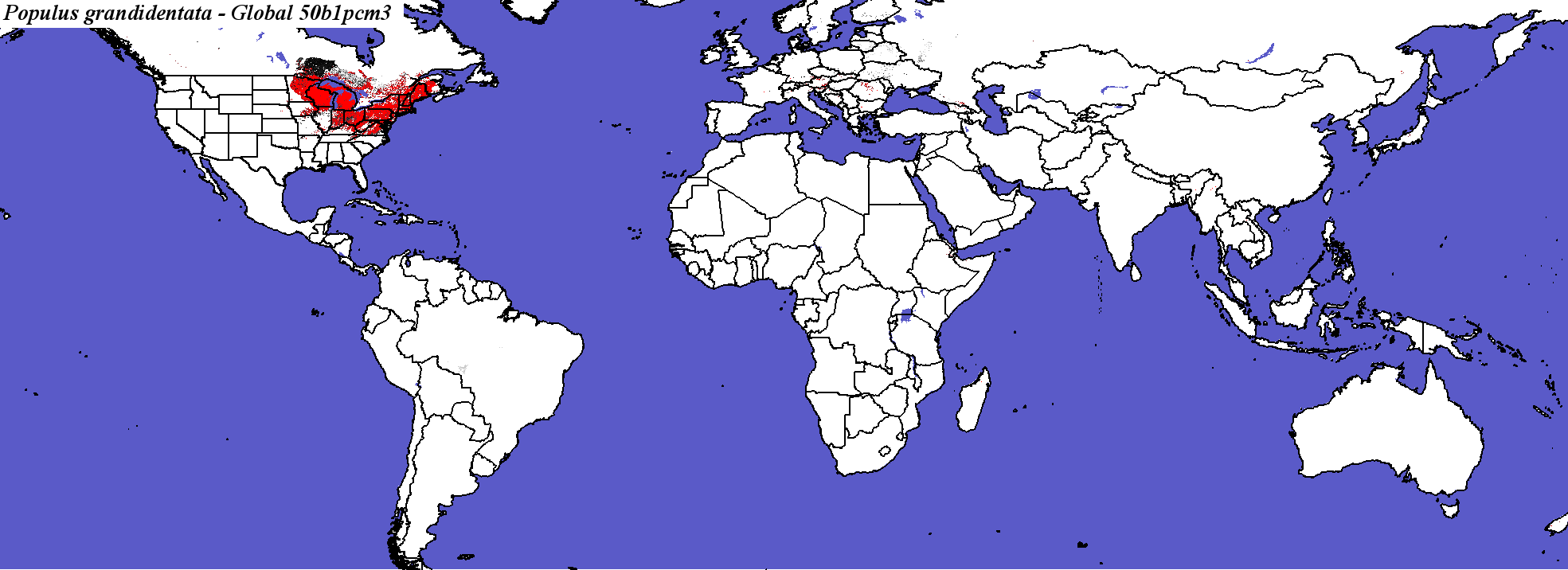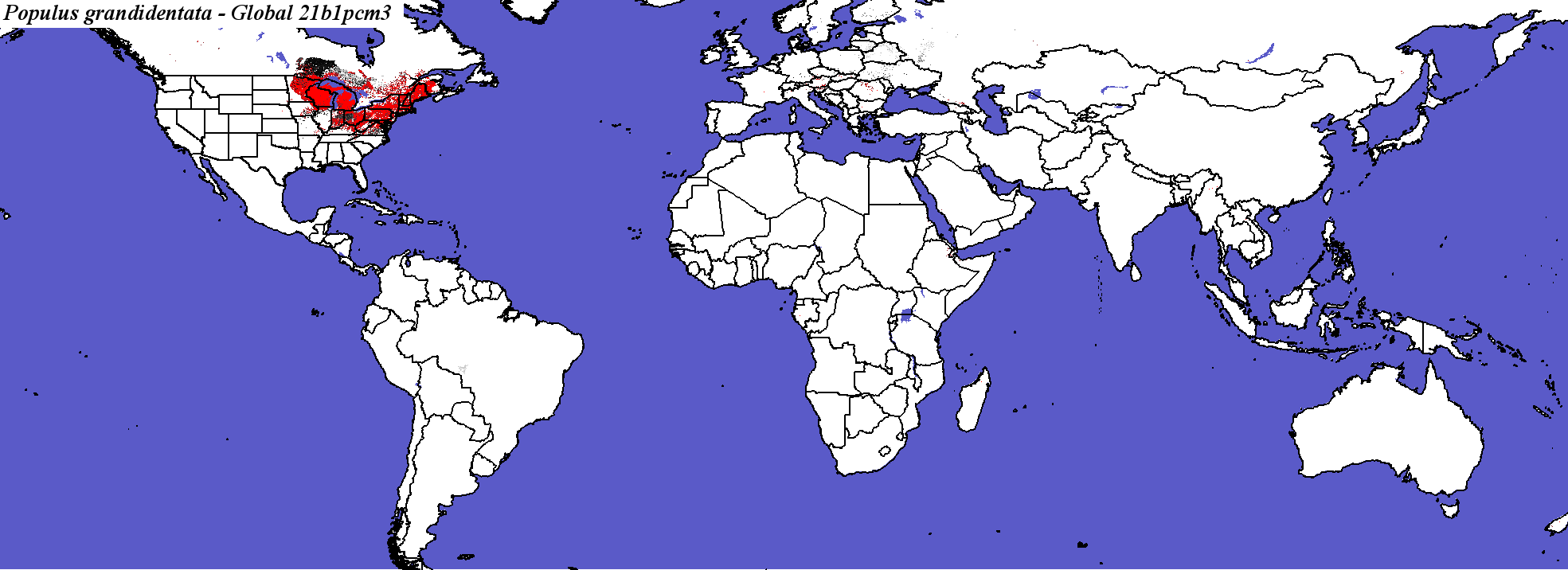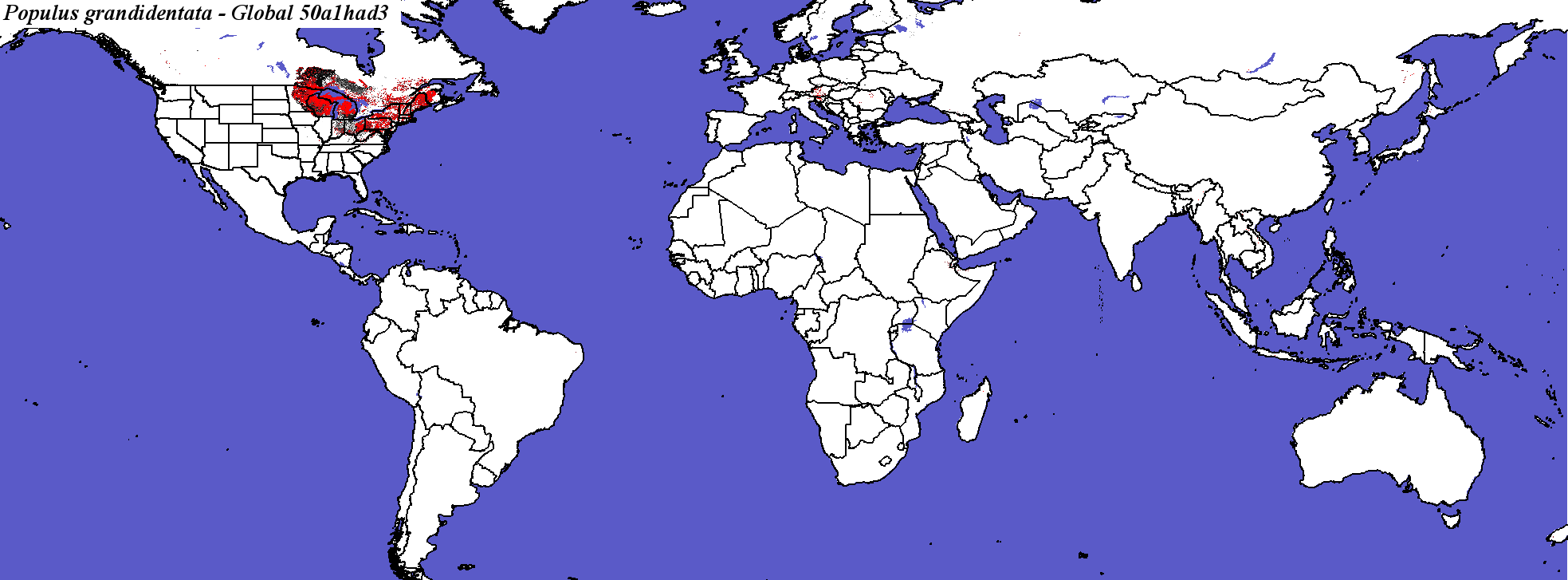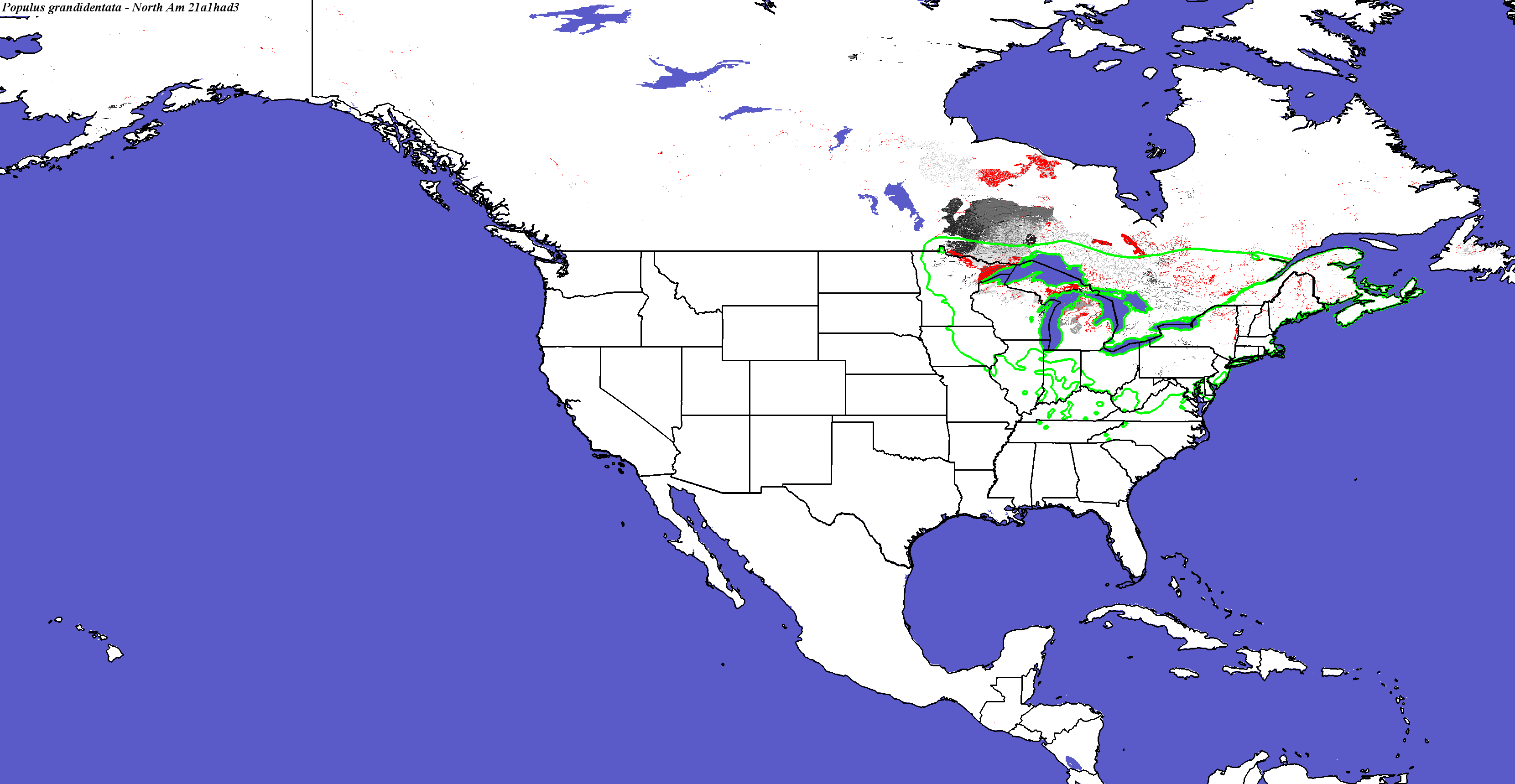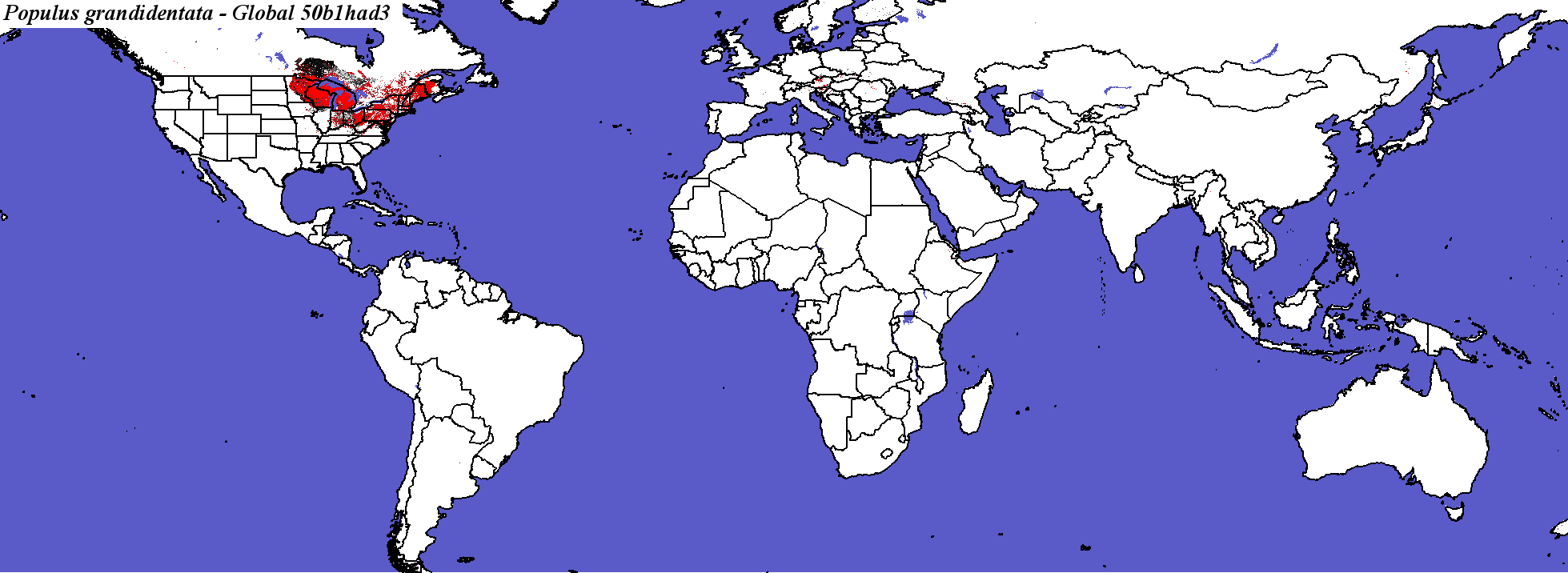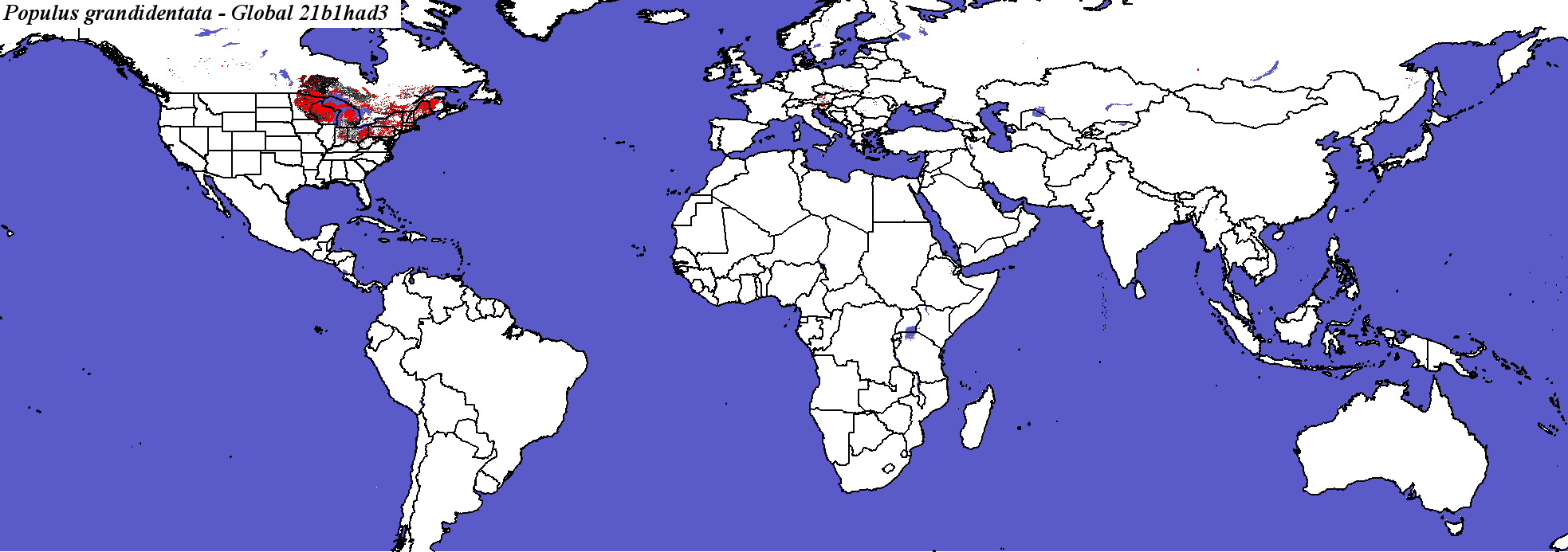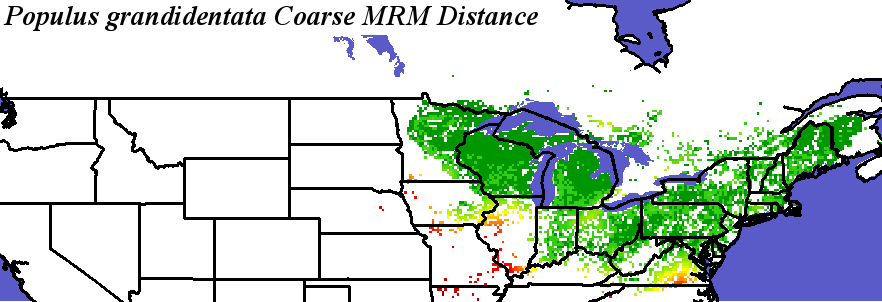
Version 5 Tree Atlas
Populus grandidentata
bigtooth aspen
elev
Click on any map to enlarge
| Synonyms | FIA Plots | GBIF Sites | Other SitesOther TypesTotal Sites | Notes |
| Populus grandidentata var. angustata; Populus grandidentata var. subcordata | 3504 | 75 | 3579 | some parts of range not well represented |
Compare with Current Range from the Silvics Manual for Populus grandidentata
Compare with Populus grandidentata modeled for Current conditions by Iverson and Prasad
Populus grandidentata not modeled by Crookston and Rehfeldt
Populus grandidentata not modeled by Coops and Waring
Compare with Populus grandidentata modeled for PCM A1FI in 2100 by Iverson and Prasad
Compare with Populus grandidentata modeled for PCM B1 in 2100 by Iverson and Prasad
Populus grandidentata not modeled by Crookston and Rehfeldt
Compare with Populus grandidentata modeled for Hadley A1FI in 2100 by Iverson and Prasad
Populus grandidentata not modeled by Crookston and Rehfeldt
Populus grandidentata not modeled by Coops and Waring
Populus grandidentata not modeled by Crookston and Rehfeldt
Populus grandidentata not modeled by Coops and Waring
Compare with Populus grandidentata modeled for Hadley B1 in 2100 by Iverson and Prasad
Populus grandidentata not modeled by Crookston and Rehfeldt
Number of Suitable Ecoregions (Niche Breadth) | 158 |
Percent Rank of Generalist Niche Breadth of all ForeCASTS species | 12.4658 |
Area in Present Suitable Range (in km2) | 1181480 |
Area in Future Suitable Range (Had B1 2050, in km2) | 730310 |
Area of Overlap of Future Suitable Range with | 617575 |
Percent Overlap of Future Suitable Range with | 52.2700 |
Percent Rank of Largest Proportion of Overlap of all ForeCASTS species | 46.7123 |
Percent Change in Area of Suitable Range (Had B1 2050) | -38.1800 |
Percent Rank of Largest Percent Change in Suitable Area of all ForeCASTS species | 66.0274 |
Mean Non-Zero Fine Minimum Required Movement Distance | 17561.5 +/- 46169.8 |
Percent Rank of Longest Fine MRM Distance of all ForeCASTS species | 40.8219 |
Mean Non-Zero Coarse Minimum Required Movement Distance | 7.66242 +/- 20.7472 |
Percent Rank of Longest Coarse MRM Distance of all ForeCASTS species | 45.2055 |
Mean Non-Zero Coarse Optimum Required Movement Distance | 37.9733 +/- 91.3933 |
Percent Rank of Longest Coarse ORM Distance of all ForeCASTS species | 66.3014 |
Area of Present Range that has No Home in the Future | 676 |
Proportion of Present Range that has No Home in the Future | .0500 |
Percent Rank of Largest Proportion with No Home of all ForeCASTS species | 70.8219 |
Area of Present Range that is already Home in the Future | 385600 |
Proportion of Present Range that is already Home in the Future | 32.6300 |
Percent Rank of Largest Proportion Already Home of all ForeCASTS species | 38.9041 |
Thu Jul 21 10:05:11 EDT 2016
For additional information contact:
- William W. Hargrove
- Eastern Forest Environmental Threat Assessment Center (EFETAC)
- USDA Forest Service
- Southern Research Station
- 200 WT Weaver Boulevard
- Asheville, NC 28804-3454
- (828) 257-4846
- (865) 235-4753 (cell)
- (828) 257-4313 (fax)
- hnw@geobabble.org
- Eastern Forest Environmental Threat Assessment Center (EFETAC)
